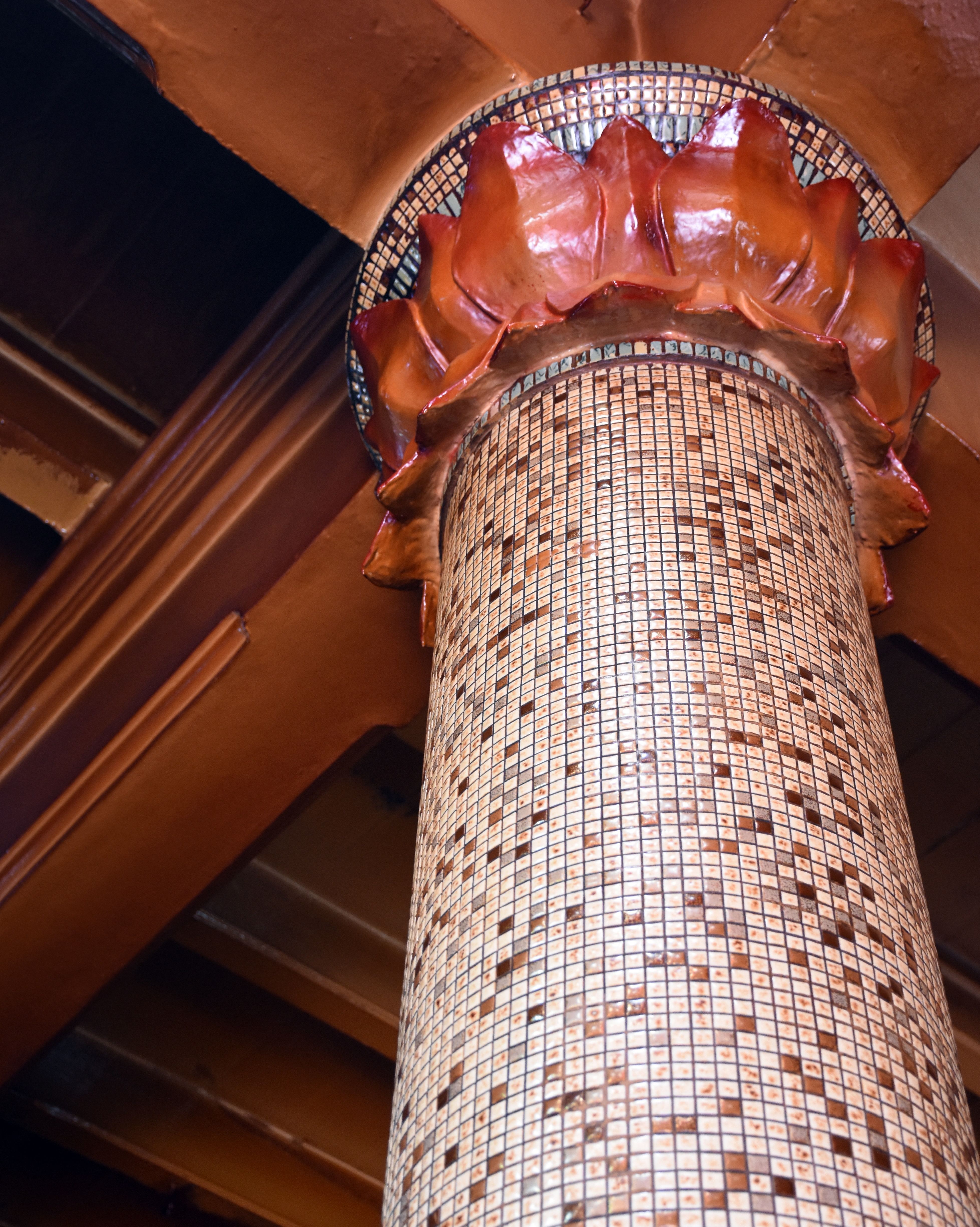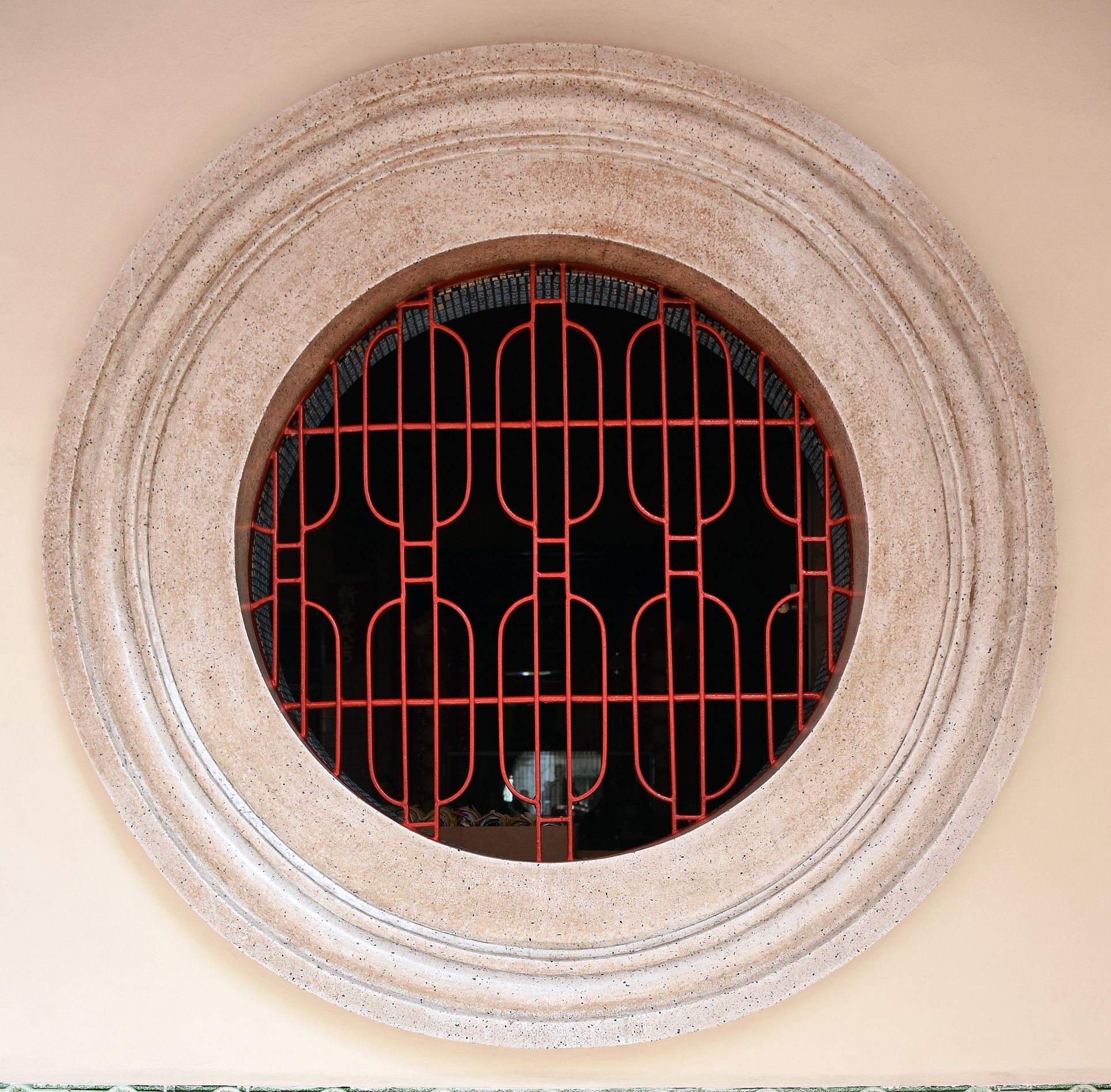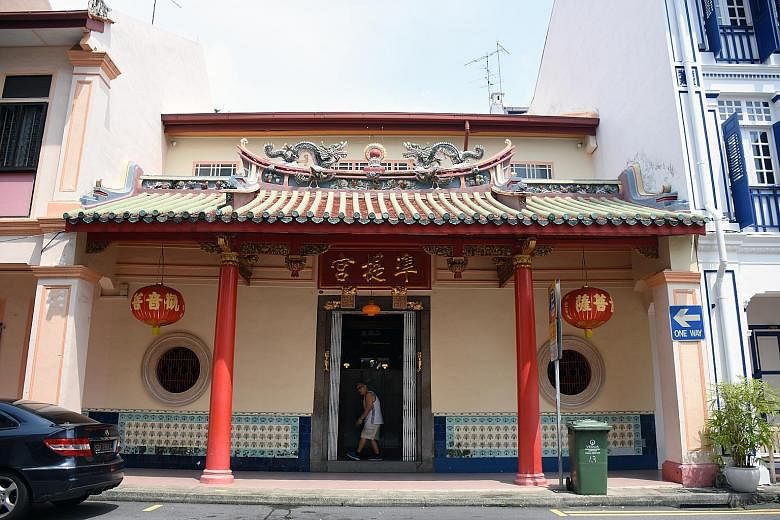The two-storey Cundhi Gong Temple in Keong Saik Road, nestled between taller shophouses, is a gem that is easy to miss.
Despite its size, the 400 sq m Cundhi Gong, which is affiliated to the Kwan Im Thong Hood Cho Temple in Waterloo Street, is rich in decorative details.
It was built in 1928 in the Nanyang style, which is a hybrid of Hokkien- Chinese and shophouse architecture. The temple's facade has original floral tiles produced by Belgian manufacturer Gilliot & Cie. The underside of the roof over the five-foot-way features elaborate wood carvings and Chinese paintings of scenic landscapes.
Inside, the columns and walls are covered with mosaic tiles; they were initially painted red and white respectively. The temple's 75-year-old caretaker, who identifies herself only as Madam Wan, says the mosaic tiles were added about 55 years ago for easy maintenance - the interiors require only a wipe-down instead of regular repainting.
The temple was gazetted for conservation in 1989 as part of the Chinatown-Bukit Pasoh Conservation Area.
Unlike most temples which are standalone buildings with their own forecourt, Cundhi Gong's site does not extend beyond the five- foot-way.
Mr Lee Yan Chang, executive architect of conservation management at the Urban Redevelopment Authority, says: "Because the site is not very big and is within the urban context where the five-foot-way would need to continue, a more modest design approach was adopted."
Cundhi Gong's main prayer hall is behind the temple's shallow entrance, with a smaller prayer hall and outdoor courtyard behind it.
The living quarters for the caretaker are a room to the left of the main prayer hall and on the second floor.
Ma jie - women from Shun Tak in China's Guangdong province who took a vow of celibacy and worked in Singapore as domestic helpers between the 1930s and 1970s - used to worship at Cundhi Gong.
Since then, the temple has stood witness to the gentrification of Keong Saik Road as hip bars and restaurants moved into the area.
Mr Lee says: "A lot of older residents in the area, such as the clan associations, have acknowledged that they need to evolve with the times but without losing character and identity. So with the presence of this temple, the old-world character and identity of this area is still retained."
• This is a monthly column on heritage buildings.
HIGHLIGHTS

1. CURVED ROOF RIDGE AND ORIGINAL TERRACOTTA ROOF
A distinctive feature of the Hokkien-Chinese temple is its curved roof ridge.
According to Mr Lee Yan Chang, executive architect of conservation management at the Urban Redevelopment Authority, different dialect groups have different curvatures for their roof ridges.
He says: "The Hokkien-Chinese roof ridge is very curved and steep. If you look at other temples, such as Cantonese temples, they have a flatter ridge. Teochew temples have a more gentle ridge. Hokkien ones are the curviest."
The roof also boasts original terracotta roof tiles in between concrete ridges, with green glazed ceramic drip tiles at the eaves.
2. COLUMNS WITH EUROPEAN-STYLE BASES AND CHINESE-STYLE CAPITALS
The exterior and interior columns of the temple are a mix of Western and Eastern styles and have a lotus capital. A capital is a decorative feature above the column.
Mr Lee says: "The bottom is an European-style moulded base, like those classical column designs with an elaborate capital one can see at the National Gallery Singapore. But this capital is more of the Chinese-style with the lotus."

3. CIRCULAR WINDOWS
The window at the front is a hybrid of traditional and contemporary styles. While circular windows and doorways are common in Chinese architecture, its concrete frame with a terrazzo-finish is not.
Mr Lee says: "What's unique about this is it's usually either timber or granite. But in this case, it's concrete and finished with terrazzo.
Terrazzo was usually used in the past for floors, walls and staircases."
The geometric mild-steel window grilles, painted in striking red, add a contemporary touch.


